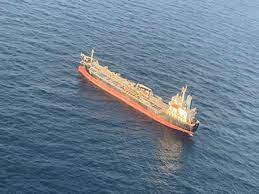Demand for India’s Basmati, the long-grain aromatic rice, from traditional buyers in the Middle East, the US and Europe has dropped as it has become costly. The reason is the escalating tensions in the Red Sea, the shortest and most efficient trade route for ships moving from Asia to Europe.
Attacks by Iranian-backed Houthis from Yemen on commercial vessels passing through the Red Sea have forced shippers to avoid one of the world’s most crucial trade routes. The alternative longer route around the Cape of Good Hope on the southern tip of Africa has added more than 3,500 nautical miles (6,500km) to the journey and close to a half-month of sailing time to each trip, significantly increasing shipping costs.
Exporting Basmati from India has become a challenge for shippers as freight costs have shot up as high as five times with an increase in insurance premiums, shortage of containers and longer transit time, said, Vijay Kumar Setia, director of Chaman Lal Setia Exports Ltd and former president of the All India Rice Exporters’ of India.
Part of the inventory is lying at various ports or processing units, while some stock is now being sold in the domestic market, resulting in a fall in prices by about 8 percent in the local market.
India, the world’s biggest rice exporter, ships over 4.5 million tonnes of basmati rice out of the country annually. About 35 percent of about 7.5 million tonnes of production is shipped to Europe, North America, North Africa and the Middle East through the Red Sea.
“Buyers are hesitant to take at higher prices,” said Setia. “Some exports are going on, but business isn’t that smooth. We are losing profits because of higher logistic costs.”
Like Basmati, chaos in the Red Sea is disrupting shipments of produce from tea to spices and grapes to buffalo meats from India, resulting in losses to exporters. Similarly, imports of fertilisers, sunflower oil, machinery components and electronic goods to India are getting delayed, raising the risk of higher costs to consumers. This has raised concern that the unrest will lead to supply-chain snarls and contraction of trade, and halt a slowdown in food inflation.
India is heavily reliant on the Red Sea route through the Suez Canal for its trade with Europe, North America, North Africa and the Middle East. These regions accounted for about 50 percent of India’s exports of 18 trillion rupees ($217bn) and about 30 percent of imports of 17 trillion rupees ($205bn) in the year ended March 2023, according to CRISIL Ratings.
Shipments are currently getting delayed by 21-28 days. The crisis could cost the country more than $30bn in exports for the fiscal year ending March, hitting $451bn of exports a year ago by around 6.8 percent, said Sachin Chaturvedi, director-general of the Research and Information System for Developing Countries, a New Delhi-based think tank.
Official estimates of the impact on trade in India will be known when the government releases export and import data around mid-February for January.
Shipping costs rise
To avoid risk, the shipping industry has temporarily suspended Suez Canal transit. The average number of tankers and cargo ships transiting through the Suez Canal had fallen about 46 percent over two months till January 28, while the voyages around Cape of Good Hope have risen 32 percent, according to the International Monetary Fund PortWatch data.
Meanwhile, shipping prices have increased. According to Drewry’s World Container Index, the average price of transporting a 40-feet (12-metre) container on a cargo ship rose 161 percent to $3,964 on January 25 from $1,521 on December 14.
The chaos has brought concern for India. Around half a dozen ships heading toward India or with Indian crews on board have been attacked – allegedly by Houthis or hijacked by armed pirates. In response, India has increased its maritime presence in the Arabian Sea by deploying about a dozen warships.



